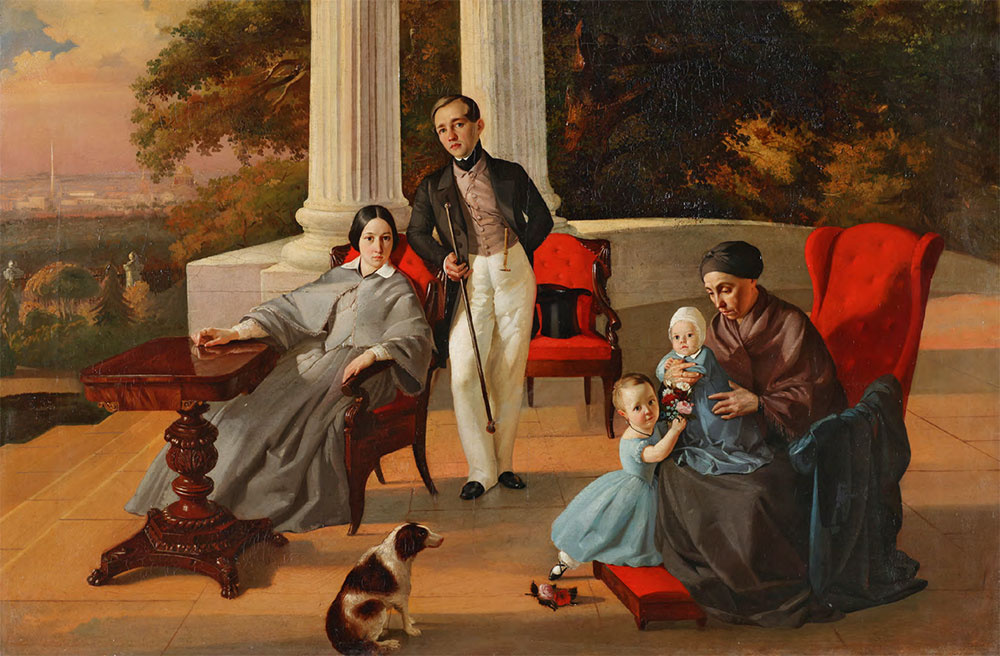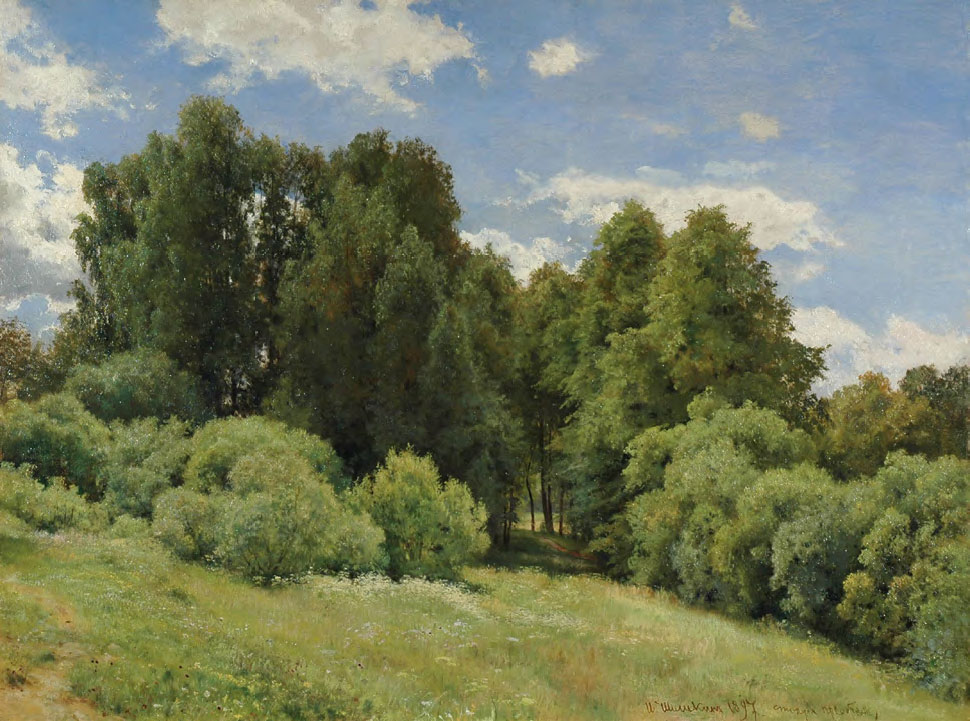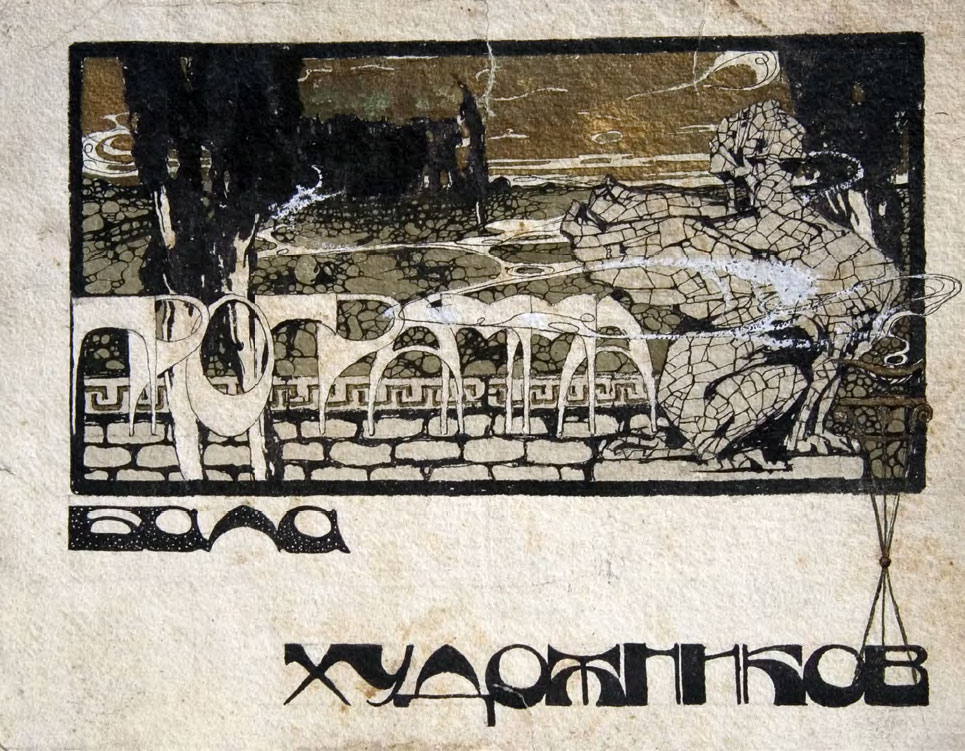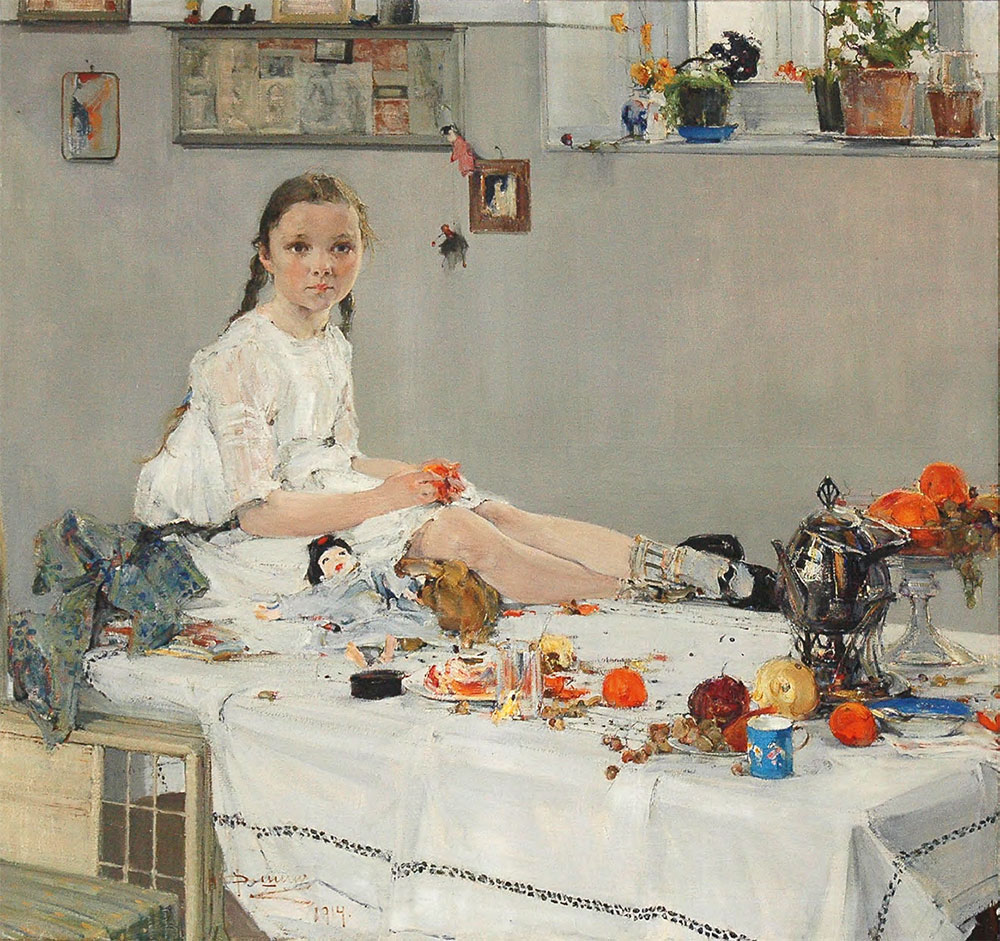Russian Art in Kazan. THE MUSEUM OF FINE ARTS OF THE REPUBLIC OF TATARSTAN
On the 90th anniversary of the birth of Galina Mogilnikova, first director of the Museum of Fine Arts of the Republic of Tatarstan
Encompassing the period from the 15th to the early 20th century, the collection of Russian art is the oldest and most important part of the Museum of Fine Arts of the Republic of Tatarstan. It was formed over the course of a century on the basis of the private collection of Andrei Lykhachev, which was later enriched through donations and acquisitions from eminent citizens of Kazan and art connoisseurs, such as Olga Alexandrova-Heinz, Sergei Bakhrushin, Pyotr Dulsky, Yevgeny Myasnikov and others.
In the early years of Soviet rule, it grew further with pieces from nationalized churches, country estates, mansions and other institutions that came under the control of the People's Commissariat of Education and the Tatar Autonomous Soviet Socialist Republic. A major part came from the Museum Fund and from the reserve collections of museums in the two capitals (the Tretyakov Gallery in Moscow, the Russian Museum in St. Petersburg); it was also enhanced by donations from private collectors.
In the post-war period the section of Russian paintings was augmented further with works acquired from private collections in Kazan and Moscow, as well as from antique and commission shops. The Museum's collection today numbers some 1,000 works, including pictures both by well-known Russian masters (Dmitry Levitsky, Fyodor Rokotov, Ivan Aivazovsky, Ilya Repin, Valentin Serov, Igor Grabar, Wassily Kandinsky and Robert Falk) and by local artists from the Kazan Province (such as Lev (Dmitryevich) Kryukov and Lev (Lvovich) Kryukov, Andrei Rakovich, Zinovy Ivanov, Fyodor Travkin, Ivan Zhuravlev and Vladimir Shchegolkov).
The museum also has unique collections of two artists closely associated with the area - Ivan Shishkin, who was born in Yelabuga in the Kazan Province, and Nikolai Fechin, a graduate and teacher of the Kazan Art School.
The formation of the section of Old Russian art is interesting in itself. Its artefacts represent the richest and most diverse material for the study of Russian religious art of the 16th-18th centuries, although the chronological framework of this collection stretches wider. Initially this part of the collection was based on donations from the Archaeological Museum of the Kazan Imperial University. After 1917, icons from churches and monasteries that had been closed or destroyed were added. The most significant 16th century work is the icon “Our Lady Hodegetria of Smolensk" (early 16th century), attributed to the Moscow school. The “Icon of Our Lady of the Sign" (mid-16th century) is no less remarkable, distinguished for its composition and refined Oranta and Panagia elements. Other important works are the “Apostle Paul" (late 14th century), the “Nativity of the Mother of God" (early 16th century), “Our Lady of Kazan" (last quarter of the 16th century), “St. Nicholas the Miracle-Worker" and “The Holy Princes Boris and Gleb" (both 17th century), as well as the large icon of the Annunciation and the Shroud with the Entombment (18th century, originally from the collection of Andrei Lykhachev). Late 19th century works like the “Year-Round Menaia with Miraculous Images of Our Lady" show how such ancient artistic traditions continued until much later.
At the heart of the collection are 16th century icon screens from the Assumption Cathedral and the Trinity Church in Sviyazhsk, which was the first Christian city in Tatarstan. The screens have survived to the present day intact, and thus reveal both the “ensemble" nature of their composition, as well as the diversity of styles and trends represented. The ancient holy symbol of Sviyazhsk, with its image of Makary Unzhensky with 20 scenes from his life, is a rare example of late 16th century icon art.
The development of Russian art from the 18th century onwards is well represented, tracing the main stages of the formation of the Russian school; the collection also illustrates the relationship between artistic directions of distinct periods, and the interaction between the schools of Moscow and St. Petersburg and the regions. Masters of the so-called “second echelon" painters (as they were defined in Soviet art history, often for general rather than artistic reasons) also feature prominently. Frequently such artists have received little academic study, but as represented in the Kazan collection they deserve attention, not least for the revelations that comparison of such work with that by acknowledged masters can offer.
Secular art in Russia began with the parsuna painting - representations of a concrete “person", which gave rise to the subsequent development of portraiture in the 18th century. Although such depictions remain conventional and “flat", the attempt to make them more real and three-dimensional is evident in portraits such as those of Yermak Timofeyevich, the Cossack ataman who initiated the Russian conquest of Siberia, and of the nun Martha (who had been Maria Fyodorovna Nagaya, the seventh wife of Ivan the Terrible, before she entered religious orders).
(I. Besvolin ? or D. Yermolin ?) Armoury Chamber.
Portrait of Yermak Timofeyevich
Oil on metal
A smaller collection of 18th century paintings reflects the development of the portrait genre, its highlights representing the phenomenon known as Rossica, the ceremonial and chamber portraits of the Tsar's family and high-ranking dignitaries that were painted by foreign masters working in Russia (among them Johann Baptist von Lampi, Jean-Louis Voille, Georg Christoph Grooth and Pietro Antonio Rotari), as well as by famous Russian painters of the second half of the 18th century, such as Fyodor Rokotov and Dmitry Levitsky, and by provincial artists like Ivan Titov and Grigory Ostrovsky. The museum has a number of “free" (not exact) copies of such portraits of royalty, clerics and officials of different ranks painted by unknown artists of the 18th century.
The range of genres and styles that characterized Russian art in the first half of the 19th century is well represented in the museum. Portraits by Vasily Tropinin, Karl Bryullov and Yevgraf Sorokin, landscape and genre works by Maxim Vorobiev, Alexei Bogolyubov, Alexander Gineh, Pavel Dzhogin, Lavr Plakhov and Ivan Durnov, and religious pictures by Yakov Kapkov and Mikhail Scotti can be considered representative works for each particular artist, as well as revealing new techniques and stylistic approaches characteristic of the period. Two pictures by the marine painter Ivan Aivazovsky (“Gondolier at Sea by Night" and “A View in Crimea") are notable for effects characteristic of romanticism, achieved through the use of designed and fine gradations of colour. The trends of academicism that were important for the development of the Russian school as a whole are represented by pieces by Carl Timoleon von Neff, Pavel Pleshanov, Vasily Pukirev, Yekaterina Khilkova and Vasily Khudyakov that are marked by their technical accomplishment. The museum also has a series of studies and sketches by Khudyakov, including “The Mower" (1847), his graduation work from the School of Painting and Sculpture of the Moscow Art Society, for which the artist was awarded a large silver medal.

Yevgraf SOROKIN. Family Portrait. 1844
Oil on canvas
The visual art of the period, filled with patriotic inspiration following the victory over Napoleon, is marked by its keen attention to the historical events of the Patriotic War of 1812, as in the military portraits of war heroes that were accomplished by the artists George Dawe and Nikolai Sverchkov. There are also many portraits painted by unknown artists from both the major cities and the provinces, which can be divided into several thematic groups. There are family portraits (the “Ennatsky Family Portrait" and the “Sazonov Family Portrait"); small collections or galleries of portraits of members of a single family (like the Molostvovs and other noble families from the Kazan Province); portraits of the Kazan intelligentsia, such as the professors of Kazan University Karl Friedrich Fuchs and Karl Voigt; portraits of society figures (Mikhail Musin-Pushkin, administrator of the Kazan educational district, or marshal of the nobility in the Kazan uyezd, Nikolai Neikov); portraits of military officers (V.P. Monasein, I.A. Palitzin); and portraits of church elders and priests. The museum has a distinguished collection of 19th century portrait miniatures.
Landscape paintings by Alexei Savrasov, Fyodor Vasilyev, Vasily Polenov, Viktor Rezanov, Lev Kamenev, Yefim Volkov, Alexander Kiselev and Vasily Vereshchagin represent the Russian realist school of the second half of the 19th century. The golden era of the landscape genre is also associated with outstanding Russian landscape painters like Alexei Bogolyubov, Isaac Levitan, Arseny Meshchersky, Alexei Pisemsky, Konstantin Kryzhitsky, Mikhail Klodt and Arkhip Kuindzhi, whose works range across a variety of styles, from academicism and romanticism to Impressionism and Symbolism.
The museum's impressive collection of works by Ivan Shishkin, the outstanding landscape painter whose life was closely connected with the Kazan area, deserves special mention. The town of Yelabuga, where Shishkin was born and spent his childhood, has a House-Museum devoted to the artist that was opened in the 1970s, with the active involvement of the Tatarstan Museum of Fine Arts. With 42 paintings and over 400 graphic works, including 25 original drawings, the breadth of the House-Museum's collection is only exceeded by those of the Tretyakov Gallery and the Russian Museum. It traces the development of Shishkin's artistry from his student and graduation works from St. Petersburg's Academy of Arts to the magnificent paintings of the last years of his life, when the painter revealed remarkable new dimensions to his work. In his “Forest Meadow" (1897), the painter moves away from his typical epic realist landscape style to give full rein to his engagement with the spontaneity of Impressionism, evident in the fresh and bright colours that depict the lush mature green of nature, and the intense blue sky with its bright rays of sunlight.

Ivan SHISHKIN. Forest Meadow. 1897
Oil on canvas
In comparison with this extensive landscape collection, the museum has fewer genre or historical pieces. But works by various masters of the second half of the 19th century, principally the “Peredvizhniki" (Wanderers) with their social activism and critical thinking, are relevant in the study of the artistic development of artists such as Vasily Perov (sketches for “The Joys of Winter" (1864) and “The Seller of Song-Books in Paris" (1863-1864)), Arseny Shurygin (“The Arrest" (1867)), Vladimir Jacobi (sketches and studies), the Makovsky dynasty artists, Konstantin Savitsky, Isaac Batyukov, Vasily Golynsky and Konstantin Trutovsky (with a series of “Little Russian" scenic pictures). Historical paintings include “Messalina" by Pavel Svedomsky (1900) and “The Last Minutes of Philip II, Metropolitan of Moscow" by Nikolai Nevrev (1898).
Portraiture of the period is represented by a number of famous names, including Valentin Serov's “Portrait of S.M. Dragomirova" (1889), Nikolai Yaroshenko's “In the Park. Portrait of S.L. Levitskaya" (1883), Nikolai Nevrev's portraits of the Kharitonenko spouses (1892), and portraits by Ivan Kramskoi and other artists whose works are rich both in psychological depth and artistry. Six portraits by Ilya Repin - from his early “Girl Reading" (1870) to the large- scale “Portrait of the Actress Bella Gorskaya" (1910) painted en plein-air with broad open strokes in a free Impressionist manner - are revelatory works by the famous master. The museum's collection of Repin's works includes two variants of realistic portraits of Olga Alexandrova-Heinz (1890): the subject was the wife of Kazan's Governor General Alexander Heinz, herself a benefactor and patron of the arts who, in addition to her public duties, was a collector of paintings and prints by Russian and foreign artists.
The founding collection of the Tatarstan Museum of Fine Arts came from the former museum of the Kazan Art School, which had been formed in the pre-revolutionary period with the active involvement of the Academy of Arts. Thus, it possessed representative early works by the School's graduates, including Nikolai Pirogov, Grigory Svetlitsky, Alexander Gorbunov and Alexander Stolyarov, as well as works of many Russian artists who remain lesser-known today, among them Mikhail Latri, Ivan Goryushkin-Sorokopudov, Yevgeny Stolitza, Anton Kandaurov, Alfred Eberling, Ferdynand Ruszczyc and Leonard Turzhansky.
Works by the founders of the Kazan Art School, such as Ivan Denisov, Grigory Medvedev and Khristofor Skornyakov, came from the same collection. It also included a number of works by pre-revolutionary students and more than 20 pieces by Pavel Radimov, one of the founders of the “Association of Artists of Revolutionary Russia", who was a student of Nikolai Fechin, and then a teacher of art history, and Russian language and literature at the School.
The Kazan Art School is inextricably linked to the figure of Fechin (1881-1955), first as a student and later as a professor whose influence on the school's development cannot be overestimated. The Tatarstan Museum of Fine Arts has the largest collection of works by this outstanding 20th century artist in Russia, including paintings, graphics, sculpture and works of arts and crafts (in total, more than 180 works, including 90 paintings). The collection includes gifts from his daughter, Iya Fechina,
that offer insights into the American period of the artist‘s creative work.
Fechin's work enriched the artistic culture of both Russia and America, to which he emigrated in 1923. This talented portraitist and master of full-scale drawing and multi-figured composition proved an original specialist in the field of arts and crafts, as well as a sculptor and architect (his house in Taos, New Mexico is listed in America's National Register of Historic Places).

Nikolai FECHIN. Programme of the Artists' Ball. 1901-1905 (?)
Sketch of the cover. Ink, brush, pen, watercolour, bronze and silver paint on cardboard
Kazan is particularly proud that the Russian period of Fechin's life is associated with the city, where the majority of his works were created. The “Khazine" National Art Gallery, a branch of the Tatarstan Museum of Fine Arts, has a special Fechin hall where some of his most famous works are permanently exhibited: they offer insight into the development of his art, covering the main genres and themes of both his Russian and American periods.

Nikolai FECHIN. Portrait of Varya Adoratskaya. 1914
Oil on canvas
The wide stylistic range and richness of the art of the late 19th and early 20th centuries, including major art groups and associations such as “World of Art", the “Union of Russian Artists", “Blue Rose" and “Jack of Diamonds", is well represented by figures such as Valentin Serov, Konstantin Korovin, Boris Kustodiev, Osip Braz, Konstantin Somov, Stanislav Zhukovsky, Konstantin Bogaevsky, Nikolai Krymov, Sergei Vinogradov, Ilya Mashkov, Vasily Rozhdestvensky, Mikhail Larionov, Natalia Goncharova, Alexander Osmerkin and Pyotr Konchalovsky. Each of these works illustrates the search for new forms and means of artistic reflection characteristic of the times, as well as the distinctive impressions of each artist. The museum's collection of modernist artists (Alexander Golovin and Alexandre Benois), Symbolists (Viktor Borisov-Musatov, Mikhail Vrubel and Pavel Kuznetsov), and abstractionists (Wassily Kandinsky) is one of the best in Russia, and works from it are frequently exhibited at major Russian and international shows.

Mikhail VRUBEL. The Flight of Faust and Mephistopheles. 1896
Decorative panel. Oil on canvas
Graphic art is a key element at the Tatarstan Museum of Fine Arts, which has a collection of several thousand items, mainly prints. It includes about 600 original drawings and watercolours, representing in full the development of the Russian school in general, and of graphic art in the Kazan region in particular. Amongst its key pieces are works by Alexander Agin and Ivan Ugryumov, Ivan Aivazovsky and Mikhail Lebedev, Leonid Solomatkin and Alexei Savrasov, Mikhail Nesterov and Filipp Malyavin. Like the collection of Russian painting, it comprehensively represents the artistic associations of the late 19th and early 20th centuries and includes graphic works by Boris Anisfeldt, Ivan Bilibin, Alexandre Benois, Mstislav Dobuzhinsky, Anna Ostroumova-Lebedeva, Konstantin Somov, Alexander Gausch and Dmitry Bouchene, as well as book illustrations by Pyotr Boklevsky, Georgy Narbut and Dmitry Mitrokhin.
Among the Kazan graphic artists who worked in the city and its surrounding regions, the names of Rafail Stupin, Ivan Belonogov, Karl Wilhelm Bardou, Vasily Turin, Edward Tracy Turnerelli and Vasily Khudyakov deserve mention, alongside Lev Kryukov and Andrei Rakovich who taught painting and drawing at Kazan University.
The collection of Russian sculpture from the 18th-ear- ly 20th century includes some 40 items, and offers only a partial reflection of the national school. It includes work by major figures such as Pyotr Klodt, Fyodor Tolstoy, Ivan Efimov, Eugene Lanceray, Mark Antokolsky, Nikolai Laveretsky, Matvei Chizhov, Ilya Ginzburg, Pavel Trubetskoy, Sergei Konenkov and others. There are also pieces of small-scale sculpture (portrait, animal and genre scenes), figurines (small statuary), bas-reliefs and medal art.
The research department of Russian art is one of the oldest sections of the museum, and was established when the museum was relocated to the mansion of Alexander Sandetsky. At that time V.A. Yastrebova was a department member, followed at different times by Vilora Chernysheva (1969-1992), Anatoly Novitsky (1992-2006), Irina Loba- sheva (senior researcher, 1997-2006; head of department, 2006-2009), as well as Galina Ramazanova and Irina Neiderova.
For more than 20 years the collection of Russian paintings was systematically studied by Galina Mogilnikova (1928-2001), the first director of the museum, who later became its deputy director of research and head of archives. Her truly titanic research work resulted in the publication of the complete scientific catalogue of this part of the museum's collection in 2005.[1] Mogilnikova also initiated and organized many exhibitions of Nikolai Fechin (1958, Kazan; 1963, Kazan, Moscow, Leningrad, Kirov; 19751976, Seattle, Santa Fe, Oklahoma (USA), and Kazan, Moscow, Leningrad; 1981, Kazan). Together with Anatoly Novitsky, the senior museum worker in Kazan and the major fine art expert of the Republic, she focused on enriching the museum's collection of works by Fechin. She was the author and editor of “Nikolai Fechin. Collected Documents, Letters and Memories about the Artist" (1975).
Mogilnikova was a legendary museum figure: a true professional whose personal enthusiasm was always unbounded, her contribution to the art institutions of the city, as well as to generations of fine art experts and art historians in Kazan, was exceptional. It is fitting that this article should appear in 2018, the year that marks the 90th anniversary of her birth.
As noted, the intention of this short review was to identify certain historical accents and recognized masterpieces of Russian art, as well as to draw attention to that part of the heritage of Russian art at the Museum of Fine Arts of the Republic of Tatarstan that remains little studied, and therefore less known to the general public. It can be hoped that revealing such “old" and “new" elements of the collection, as well as their levels of interdependence, will stimulate the process of assigning an appropriate place to each group of artworks, one that will be based, of course, on their individual appraisal by experts.
- “Russian Art of the 17th-early 20th Century. Painting: Catalogue. State Museum of Fine Arts of the Republic of Tatarstan" // Author and editor, G.A. Mogilnikova. Kazan: Kazan-Kazan Publishing House, 2005.
Oil on canvas
Oil on canvas
Tempera on limewood panel
Tempera on limewood panel
Tempera on limewood panel
Tempera on limewood panel; icon setting - silver, wrought metalwork, gilt
Oil on canvas
Oil on canvas
Oil on canvas
Bronze, marble
Oil on canvas
Oil on canvas
Oil on canvas
Oil on canvas
Oil on canvas mounted on cardboard
Oil on canvas
Oil on canvas
Oil on canvas
Unfinished drawing. Ink and pen on paper
Drawing for an open letter, published by the St. Eugenia Community, 1907. Ink, watercolour on paper mounted on cardboard
Study. Oil on canvas
Oil on canvas
Pastel on paper
Oil on canvas
Oil on canvas
Oil on canvas
Oil on canvas







































